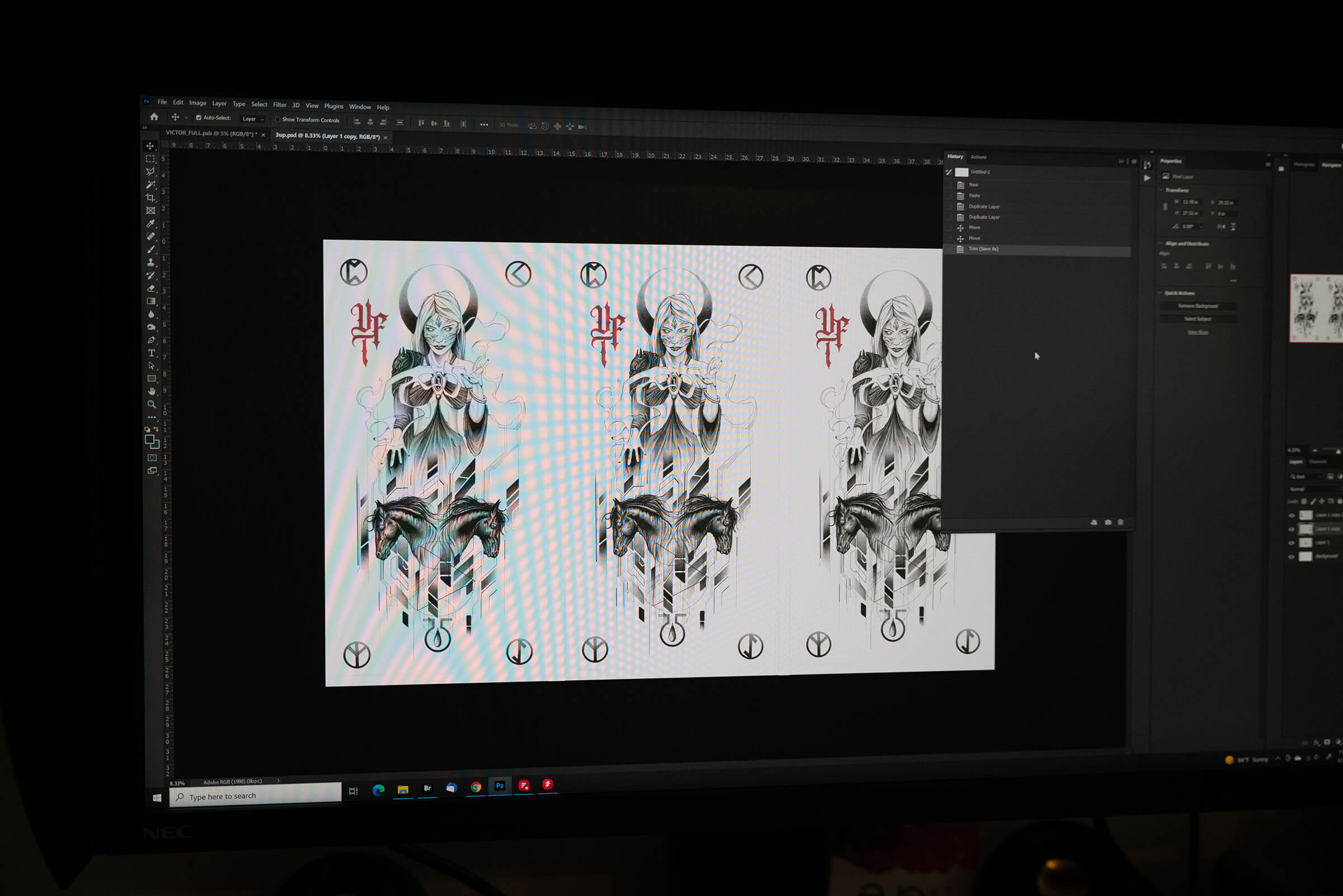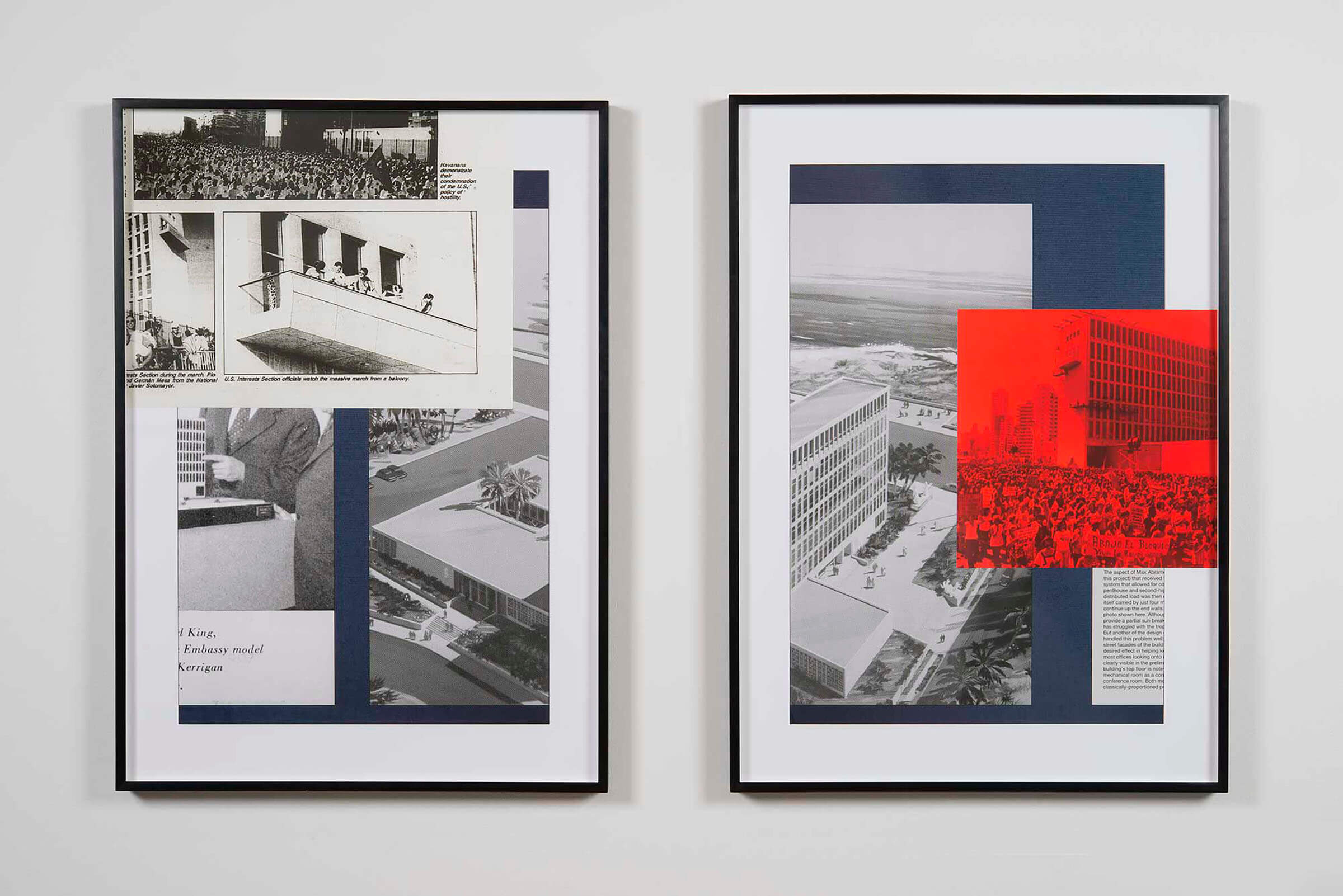Giclée prints are amongst the best fine art reproductions available today, used for gallery and museum exhibition, limited editions, private collections, archives, and more. But what are they? What do you need to know to make or buy one? And what makes these prints worth it?
A true giclée print refers to an archival print made from an inkjet printer equipped with a highly permanent set of inks in a wide range of colors. Artists, galleries, and collectors seek out giclée prints because of their unmatched standard of digital reproduction, and archival longevity. The word giclée is derived from a combination of French words “gicleur” (meaning “nozzle”), and “gicler” (meaning “to spray”). The resultant “giclée”, referencing the spray of some liquid, was then adopted to refer to inkjet printing technology.
Nowadays the better term for these prints, which we use at Brooklyn Editions, is archival digital pigment prints. However, many collectors and gallerists still use the French term (the art world does love French words, after all). While we’ll refer to them as such in this article, we prefer not to use giclée in our day-to-day operations because it holds no technical criteria or assurance of quality. It is easy to call any print made from any digital technology a giclée, but delivering a quality, tested fine art print, made from the best archival materials, takes slightly more work.

History of the Process
Its origins are shrouded in mystery, but one story goes that it was invented by musician and photographer Graham Nash. Nash had lost his negatives before an upcoming exhibit of his work, and in a stroke of genius born of desperation, he scanned his contact sheets and modified an expensive commercial Iris inkjet printer. What made this process different was the fact that these prints were made using archival inks, instead of the standard inks used for making proofs. The superior results changed fine art printing forever.
The process continued to develop since the late eighties, and technology has advanced far beyond the old Iris printers. In that time the name giclée has earned a reputation as the preferred art reproduction process. Today, it is a go-to method for most fine art prints, as well as limited editions, a process where artists make a small run of numbered prints that will hold and increase in value over time.
What makes a good giclée print?
A great giclée (or archival digital pigment print) depends on 6 major factors:
- a quality image file
- a strict color-managed workflow
- an experienced printer
- the printer itself
- archival, wide-gamut inks
- archival, inkjet-formulated paper (or any other substrate)
Pay attention to these factors whether you are creating your own prints or looking to purchase them from an artist — a great print studio will pay close attention to all 6. As with everything in printmaking, not all tools and materials are made equal. A great resource for understanding these factors is Wilhelm Imaging Research (WIR). WIR provides important information on the archival qualities of the materials and equipment discussed below, as well as best practices for storing and caring for artwork.

A Quality Image File
Without quality data, even the best printer will struggle to produce a good print. Beginning with a quality image file makes all the difference. A good file should be an original high resolution capture — either a scan or a digital creation. Today’s archival printers have a much wider range of colors than CMYK, so files should always be in RGB and kept within a maintained RGC color-managed workflow. Otherwise, you may be throwing away colors without realizing. Non-destructive editing is also key when color is critical. A skilled printer will also be well-versed in digital imaging to ensure the file any print comes from is in good condition.
An Experienced Printer
As briefly mentioned in the last bit above, a skilled and experienced printer knows better than to just hit ‘Print’. Technical ability in Photoshop and image processing are important, and years of experience give them the vision and intuition to support a project. An industry background as well as a knowledge towards the wide array of papers, inks, and technology involved in digital printmaking is invaluable. Moreover, being attentive to any necessary adjustments, sensitive to color-accuracy, and well-versed in the conditions and practices needed for a quality giclée, all compound to a better-guided experience in bringing an archival digital print to life.
The Printer Itself
Printing technology has advanced a lot in the last decade, and since printer companies are also in the business of selling ink, the cost of a professional printer has become much more accessible. Quality machines are available in small sizes, not just a 64” behemoth.
A giclée printer must be able to use inks that are made from pigments, not dyes. Those inks must be highly resistant to fading and have a wide gamut of colors. Current printers have 10 to 12 inks adding special colors. These include: vivid light magenta, orange, green, and many others. The print resolution must of course be high. Printers make an image using tiny droplets of ink, so the more dots, the better. More dots per inch enable the printer to reproduce finer detail and create smooth transitions (or gradients in tone), to best represent an image.

Ink
When it comes to ink, printers look for two main features:
- gamut (range of color)
- permanence
As giclée prints are sought after for their accuracy in reproducing color, the inks must perform well. Inks must guarantee a wide range of color, what printers call a “gamut”, as with more color possibilities, the better a printer can accurately reproduce saturated and difficult colors in a print.
The science of inks is complicated, and skilled printers study new inks that come out and routinely test new stock. As companies can change their ink formulations at any time for any reason, having the expertise and diligence of a skilled printer can save you time, money, and heartache.
While high quality color is undeniably important, inks must also be archival. Quality giclées are made to be archival, meaning that they can last hundreds of years in good condition, so archival pigment inks must be durable and long lasting. In contrast, dye inks are inexpensive and can create spectacular color, but they fade. A giclée printer should use ink with great color and permanence — the ideal combination.
Paper
Whatever printing process you use, you have to match it with the right paper. For giclée prints, the paper must be archival. That means it must:
- be acid free
- have no artificial whiteners
- have minimal to no optical brighteners (OBAs)
- have excellent quality control and consistency
- be light resistant for at least 100 years
- hold high ink density (to create deep blacks, for example)
- be lignin-free (to prevent yellowing and degradation)
A common misconception is that the paper must be cotton. While cotton rag is a tried-and-true classic material used for all forms of printmaking, not just digital, there are many alternative excellent options. Alpha(α)-cellulose fibers, organic fibers such as bamboo, hemp, and mulberry (kozo), and tightly-woven fabrics such as linens or canvas, are just some options.
Archival papers should meet local and international standards. ISO 11108 sets guidelines internationally, while the US uses ANSI standards. These standards help paper manufacturers, print studios, and customers stay on the same page. If the paper does not meet these standards, the print can degrade over time or interact with ink in unpredictable ways. And while it’s not a technical feature, a good paper for a giclée print should also feel great. A tactile surface helps a print become a beautiful object itself, not a mere reproduction.

How should I store giclée prints?
No matter how great the printer, how permanent the ink, or how high-quality the paper, giclée prints will only last if they are treated well. While technology, formulation, and expertise does everything it can to make them fade-resistant, they can be delicate and are vulnerable to scuffs, snatches, and staining. Careful handling and storage is not a recommendation, rather a requirement, to keep giclée prints.
Giclée prints should be:
- stored under glass
- protected from sunlight with UV glass
- kept out of direct light
- kept around room temperature
- protected with sleeves or acid free interleaving
- never stored near solvents or other paints
- displayed using only acid-free glues or adhesives (specifically for photography)
Glass and proper framing should help protect from moisture, dust, and touch. Sunlight can degrade the quality of the inks overtime and fade the color, so keeping it away from harsh light is a must. Also, any major fluctuations between hot and cold temperatures can damage the paper and encourage moisture. When you’re not hanging your print on a wall, store it in a neutral pH box, which will protect it from degrading. The steps above will keep your print as crisp and rich as the day it was printed. If you treat your print well, it will continue to provide you with the highest quality in art reproduction for many years to come.
Why is giclée worth it?
Giclée prints can provide virtually perfect color reproduction in a long lasting format. It is as close to the real thing as you’re likely to find — and at a much lower cost than the genuine article. For artists, fine art prints are an important way to make a living. At lower price points, prints allow more buyers to collect the artist’s work, boosting distribution and visibility. Furthermore, since they are reproducible, prints can generate ongoing revenue from a single piece — a great opportunity for both established and up-and-coming artists.
It is a true win-win: artists create more opportunities, and collectors can afford a fantastic variety of art. And when you add a skilled printer to the mix, quality is never compromised. Finding the right place to produce prints of your work is important. You need to trust that the printer understands the technology and materials involved while giving your project the care and attention it deserves. Bolstering yourself with information and knowledge of the process, so that you may better understand the process, is also a good first step, so well done for making it to the end of this article!





